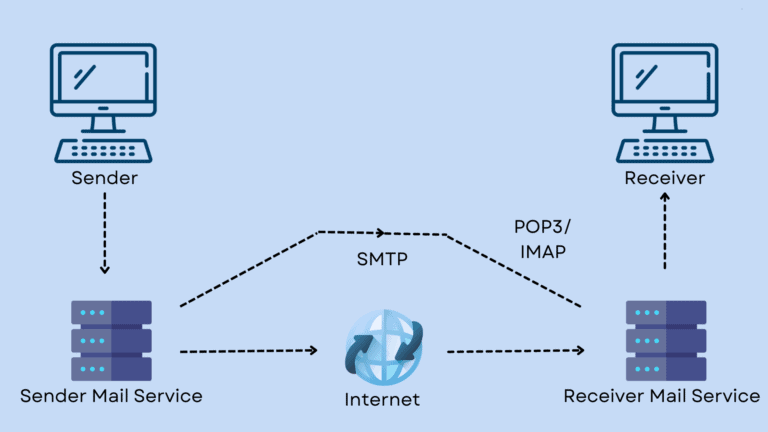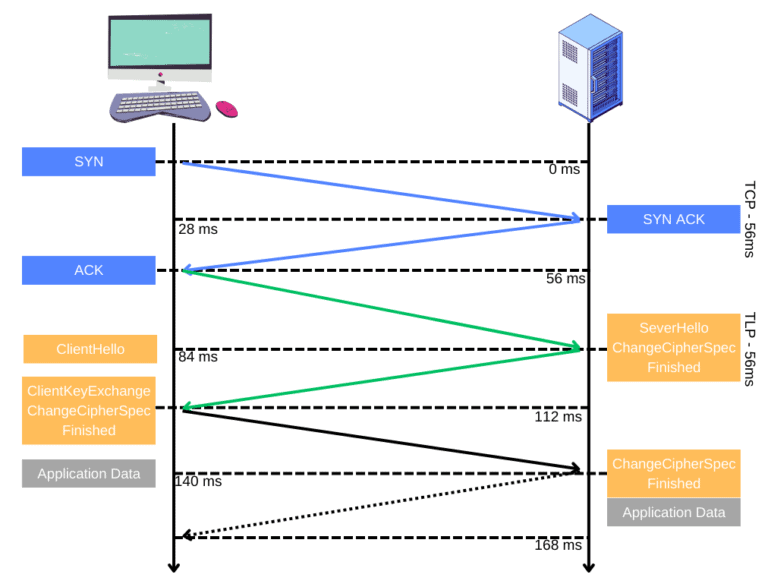- Home
- »
- SMTP Settings
SMTP Settings
Simple Mail Transfer Protocol
Popular Smtp Configurations
Email clients and their SMTP settings
What is SMTP?
SMTP stands for Simple Mail Transfer Protocol. It’s a standard protocol used for sending emails across the internet. SMTP is responsible for handling the sending, relaying, and delivery of emails between the sender’s email program and the recipient’s email server or between email servers. It works in conjunction with other protocols like POP3 (Post Office Protocol) or IMAP (Internet Message Access Protocol) which are used for receiving emails.

Here’s a simplified breakdown of how SMTP works:
- You compose an email: You write your message, add attachments, and enter the recipient’s address.
- Your email client contacts an SMTP server: Your email client (like Gmail or Outlook) connects to an SMTP server run by your email provider.
- The SMTP server authenticates you: The server checks your login credentials to make sure you’re authorized to send email.
- The email is sent to the recipient’s SMTP server: The server then sends your email to the recipient’s SMTP server, which is usually run by their email provider.
- The recipient’s email server delivers the email: The recipient’s server verifies the recipient’s address and delivers the email to their inbox.
Advantages of SMTP
- SMTP is straightforward and easy to understand, making it accessible for developers and administrators. Its standardized format ensures compatibility across various email systems.
- It supports various types of attachments, text formats, and multimedia content, enabling the transmission of diverse types of messages.
- SMTP includes error-checking mechanisms and retries for failed message delivery, increasing the chances of successful email transmission.
- It works seamlessly across different operating systems, devices, and email clients, ensuring emails can be sent and received across a wide range of platforms.
- Virtually all email service providers and servers support SMTP, making it a universally accepted standard for sending emails.
- SMTP can incorporate authentication mechanisms like SSL/TLS encryption, ensuring the security of email communication by encrypting the data transmitted between servers and clients.
- SMTP can handle a large volume of emails efficiently, making it suitable for both individual and enterprise-level email communication needs.
- Administrators can configure SMTP servers according to their specific requirements, allowing for customization and optimization based on the organization’s needs.
Requirements
All the things you need for SMTP configuration
Host Address
The server host address is necessary to authenticate users or tools for sending outgoing messages using your email address.
Port Number
A port number serves as a method to designate a process to which an incoming Internet or network message when it arrives at a server.
Encryption
Email encryption involves encoding the content of an email to prevent it from being accessed by anyone other than the person it is intended for.
Port Numbers And Their History
Port numbers are standardized endpoints used in networking to uniquely identify different communication channels within a computer or server. They help in managing incoming and outgoing data, ensuring that it reaches the appropriate process or service on a device.
Their history dates back to the early stages of the development of the Transmission Control Protocol (TCP) and Internet Protocol (IP) suite, where a standardized set of ports was established for specific types of services to operate consistently across different systems.This structure was introduced to streamline communication between various services running on a single device or across networked devices.
The Internet Assigned Numbers Authority (IANA) manages the assignment of port numbers. Initially, they defined a range of well-known ports from 0 to 1023, which were reserved for specific services. For instance, port 80 is commonly associated with HTTP (Hypertext Transfer Protocol) for web traffic, port 443 for HTTPS (HTTP Secure), port 25 for SMTP (Simple Mail Transfer Protocol), and so forth.
Major port numbers that identify SMTP process
Port Number 25
Port 25 is the default port for the Simple Mail Transfer Protocol (SMTP), which facilitates the transfer of emails between servers. It’s been the go-to port for sending emails for a long time. However, with the rise of cybersecurity threats, ISPs have taken measures to prevent malicious activities, particularly the spread of spam emails originating from infected computers. Blocking external access to port 25 helps ISPs curb the abuse of this port by infected devices that could be part of botnets or controlled by spammers.
Port Number 587
Port 587 serves as the designated submission port for SMTP, specifically designed to facilitate secure communication between email clients and servers for outgoing email transmissions. Its popularity stems from its robust security features, making it a preferred choice for submitting emails over the less secure default port 25.
One of the key reasons for the widespread adoption of port 587 is its support for encryption and authentication. When sending emails through port 587, email clients are required to authenticate themselves before initiating communication with the server. This authentication process helps ensure that only authorized users can access and utilize the server for sending outgoing emails, thereby enhancing security and preventing unauthorized usage.
Port Number 465
SMTPS (SMTP Secure) also exists, which uses port 465 for encrypted SMTP communication, but its usage has decreased as it was deprecated in favor of STARTTLS over port 587 for secure SMTP transmission.
Port Number 2525
Port 2525 is an alternative port for SMTP communication. It’s not a standard port like 25 or 587 designated specifically for SMTP, but some email service providers or servers might allow SMTP traffic on port 2525 as an additional option for outgoing mail.
Port 2525 might be used as an alternative SMTP port if the standard ports like 25 or 587 are blocked by ISPs or if there are specific configurations in place by email service providers. However, it’s important to note that the use of port 2525 for SMTP isn’t as widespread or standardized as ports 25, 587, or 465.
Encryption And Its Significance
Complete picture of TLS and SSL
SSL (Secure Sockets Layer) was the predecessor of Transport Layer Security (TLS). The shift from SSL to TLS occurred due to improvements and updates in security protocols. TLS, the successor of SSL, shares similar goals: to provide secure communication over a network, ensuring privacy and data integrity between communicating applications.
TLS comprises two primary sub-protocols:
TLS Record Protocol
This protocol is responsible for the encryption and integrity of the data being transmitted. It divides messages into manageable blocks, adds necessary security measures like encryption, and ensures data integrity by adding message authentication codes.
TLS Handshake Protocol
This protocol manages the authentication and key exchange process between the client and server before secure communication begins. It verifies the identity of the server, negotiates encryption algorithms and keys, and ensures that both parties agree on the parameters for secure communication.

Together, these protocols within TLS provide a secure channel for data transfer, preventing eavesdropping, tampering, or unauthorized access to the information being transmitted between systems.
TLS, an Internet Engineering Task Force (IETF) standard, was initially outlined in 1999 and subsequently refined in RFC 5246 (August 2008) and RFC 6176 (March 2011). It’s an evolution from the earlier SSL specifications (1994, 1995, 1996) created by Netscape Communications to integrate the HTTPS protocol into their Navigator web browser.








































